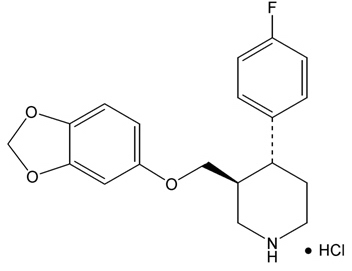Pharmaceutical products & drug action

 D.1 Pharmaceutical products and drug action (1 hour)
D.1 Pharmaceutical products and drug action (1 hour)
Pause for thought
Pharmaceutical products are big business. The classic example of where making a profit was placed above ethical consideration is the thalidomide case.
Thalidomide was introduced as a sedative in the 1950s. It was found to be an effective anti-emetic and was given to pregnant women to prevent morning sickness. The drug was produced by a German company called Grünenthal and also by the Distillers Company in the UK. Although their own research showed some problems they did not initially withdraw the drug even when there were reports that babies were being born with severely deformed limbs. This was because they were making large profits from its sales. The drug was eventually withdrawn in the early 1960s after more than 10,000 babies had been born with the deformities. In 1968 a successful court case led to the Distillers Company paying out a large sum of money in compensation. It was later found that one of the enantiomeric forms of the drug was responsible for the anti-emetic effect and the other caused the deformities as the drug could cross the placental barrier to the foetus.
This happened some fifty-five years ago and one would assume that lessons have been learned and that something similar could not happen again. Unfortunately that is not the case. In 2012 GlaxoSmithKline were fined $3 billion for marketing drugs for unapproved use and for failing to report drug safety information. Three different drugs were involved, Paxil, Wellbutrin and Avandia. Probably the most important abuse concerned Paxil. Paxil is the trade name for paroxetine hydrochloride - it is also marketed as Seroxat.

Paroxetine hydrochloride (Paxil)
Paroxetine hydrochloride is an antidepressant and studies showing that it can increase suicidal tendencies in children, adolescents and young adults were initially supressed or downplayed in order not to affect its profitability. It is now banned for use with patients under the age of eighteen.
Nature of science
Medicines and drugs go through many varied tests to determine their effectiveness and safety in order to determine their risk to benefit capacity.
All pharmaceutical products are classified according to their potential for use and abuse before they are made available commercially.
Learning outcomesAfter studying this topic students should be able to: Understand
Apply their knowledge to:
| Clarification notesThe testing of drugs on both animals and humans (for the therapeutic index, LD50/ED50 and TD50/ED50 respectively) should be kept to a minimum for ethical reasons. International-mindednessThere is considerable variation between countries as to which drugs are available over the counter (OTC) and which can only be obtained on prescription from a medical practitioner. |
Teaching tipsThere is quite a lot to cover in just one hour. However students will already have some general knowledge about drugs and medicines so it is well worth starting by finding out what they do already know and building on this. Get them to share ideas about what the effects of drugs are on the body and how they can be administered - then ensure that all the relevant points have been covered. For example, you will need to explain why many drugs are administered in their ionic form as salts rather than in their undissociated form. Show them pictures of thalidomide victims and discuss the story as this is good Aim 8 and it leads on to the importance of proper pre-testing and clinical trials for all the possible enantiomers. It is worth mentioning that there are similar ethical versus economic issues with the side effects of some modern drugs e.g. paroxetine hydrochloride (see 'Pause for thought' above). Ensure that students understand what is meant by the words: tolerance, addiction, therapeutic index, therapeutic window and side effects. Discuss the ethical and practical problems of determining the LD50, ED50 and TD50 and the difference between administered dosage and bioavailability. It is also worth stressing that the more steps there are in the synthetic pathway to make a drug the lower the final yield is likely to be. | Study GuidePage 154 QuestionsFor ten 'quiz' questions (for quick testing of knowledge and understanding with the answers explained) see MC test: Pharmaceutical products & drug action. For short-answer questions see Pharmaceutical products & drug action questions together with the worked answers on a separate page Pharmaceutical products & drug action answers. Vocabulary listplacebo |
Teaching slides
Teachers may wish to share these slides with students for learning or for reviewing key concepts.
Other resources
1. A simple video looking at the stages of drug testing from the point of view of a pill.
2. A more instructive video looking at the history and importance of clinical trials.
3. A video on thalidomide from Louise Delay which shows the history, enantiomers and current usage of thalidomide. It does not give information about the delay in withdrawing the drug and the compensation trials that ensued.
4. Further information on paroxetine hydrochloride and the problems with suicidal tendencies can be obtained from the Internet Drug Index.
5. An article in compound chem.com, produced after a Frenchman died during a drug trial in JIB Docs (2) Teamary 2016, provides a good summary of how drugs are developed.

 IB Docs (2) Team
IB Docs (2) Team 















